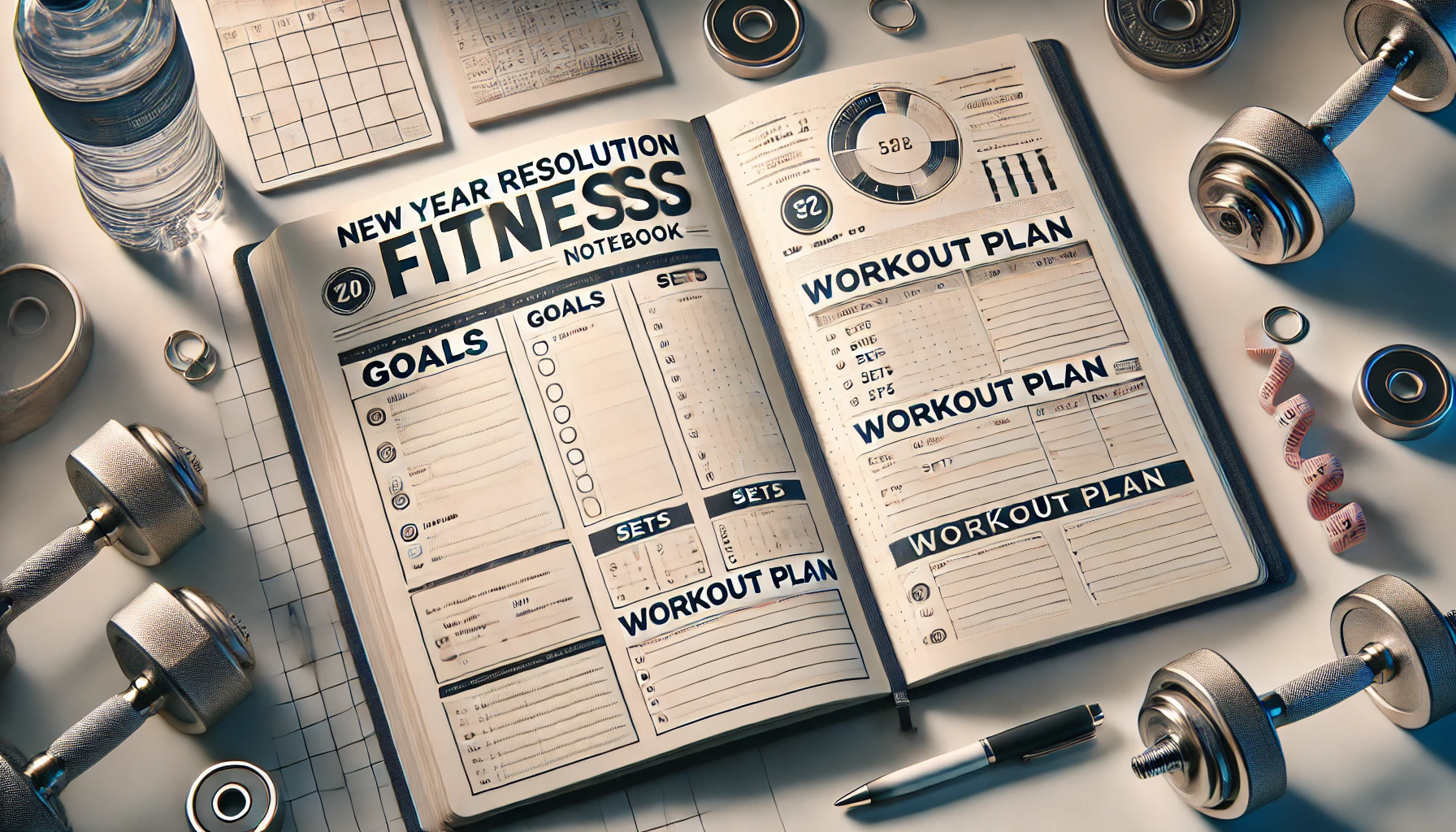New Year Gym Starter Guide: Start Strong and Stay Consistent
- FitnessFirstAcademy

- Nov 10, 2024
- 6 min read
Introduction
It’s that time of year again—New Year’s resolutions are in full swing, and many of us have committed to improving our fitness. For those setting foot in the gym for the first time (or after a long break), it can feel overwhelming. But remember, your focus should be on the process, not just the end result. Building habits and routines—also known as “process goals”—is more powerful than aiming only for the end goals. Whether you’re looking to improve your health, gain strength, or feel more energized, taking small, consistent steps will help you reach your goals. Let’s break down how to make your gym journey as successful, comfortable, and effective as possible.
Best Times to Go to the Gym
One way to ease into a gym routine is to go during off-peak hours. This can help reduce anxiety, allow you to get familiar with the layout, and access equipment without waiting.
• Early Morning: Many people avoid the gym before sunrise, so this is a great time to find it quiet.
• Mid-Morning and Early Afternoon: For those with flexible schedules, late morning (around 9 a.m. - 11 a.m.) or early afternoon (around 1 p.m. - 3 p.m.) is often less crowded.
• Late Evening: If you’re not a morning person, try after 8 p.m. when crowds begin to thin out.
Starting during quieter times can make the gym feel more approachable and help you establish your routine.
Starting with Beginner-Friendly Machines
If you’re new to the gym, machines are an excellent place to start. They’re designed to guide your movement, which makes it easier to use correct form and reduce the risk of injury. Here are a few machines that are perfect for beginners:
• Leg Press: Great for building lower body strength and teaching the fundamentals of leg exercises.
• Chest Press: A safe way to start working on chest and upper body strength.
• Lat Pull-Down: Helps develop back strength while keeping the motion controlled.
• Seated Row: Excellent for learning how to engage your back muscles.
Many machines also have QR codes on them. Scanning these codes provides video tutorials or instructions on the machine’s functions and exercises, which is incredibly helpful when you’re unfamiliar with the equipment.
Gradually Progressing to Free Weights
Once you feel comfortable on machines and have learned basic form, you can start experimenting with free weights. Free weights, like dumbbells and barbells, give you more freedom in your range of motion and activate stabilizer muscles, which are key for building overall strength and coordination.
• Start Small: Begin with lighter weights and basic exercises like dumbbell curls, shoulder presses, and bodyweight squats.
• Focus on Form: This is essential. If you’re unsure about your technique, consider hiring a personal trainer for a few sessions to help you learn the correct form. A trainer can guide you through exercises, prevent injury, and ensure you’re making the most of each workout.
Personal trainers are especially beneficial for beginners, as they create customized plans and provide feedback that builds a strong foundation for future workouts.
Setting SMART Goals for Long-Term Success
One common mistake is setting vague or overly ambitious goals. Instead, aim for SMART goals—those that are Specific, Measurable, Achievable, Relevant, and Time-Bound. Here’s how they work in a fitness context:
• Specific: Set a clear goal, like “I want to be able to do 10 push-ups.”
• Measurable: Track your progress to stay motivated.
• Achievable: Set realistic goals to avoid frustration and burnout.
• Relevant: Make sure your goals align with your overall vision.
• Time-Bound: Set a time frame, like “by the end of three months.”
SMART goals make it easier to track progress and stay motivated. Instead of saying “I want to get fit,” try something more concrete like “I’ll go to the gym three times per week for the next two months.”
Choosing a Gym with a Judgment-Free Atmosphere
For those feeling anxious or uncertain about going to the gym, consider a fitness center that emphasizes a judgment-free culture, like Planet Fitness. Known for its welcoming environment, Planet Fitness caters to beginners with straightforward machines and a focus on helping everyone feel comfortable. This can be especially helpful for those who are new to fitness and want a less intimidating space to get started.
Essential Gym Etiquette for Beginners
To make the gym a comfortable place for everyone, here are a few simple etiquette tips:
• Bring a Towel and Wipe Down Equipment: Always wipe down machines and benches after using them.
• Put Equipment Back in Its Place: Rerack weights, return any equipment you’ve used, and help keep the gym organized.
• Limit Phone Use: Avoid using your phone for long periods on machines or benches, as others may be waiting.
• Mind Your Space: Respect others’ personal space, especially during busy times.
Following basic etiquette will help you feel more confident and respected within the gym community.
Managing Gym Anxiety
Gym anxiety is real, and it’s normal to feel self-conscious when you’re just starting. Here are some strategies to help manage that feeling:
• Take Advantage of Gym Orientation: Many gyms offer orientation sessions for new members. These can help you learn where things are, how machines work, and how to get comfortable in the space.
• Plan Ahead: Before you go, write out your workout plan. Knowing what you’re going to do can make you feel more confident and focused.
• Find Comfort Zones: Stick to machines at first or go with a friend if that helps you feel more comfortable.
• Celebrate Small Wins: Every time you go to the gym, you’re building confidence. Small achievements—like trying a new machine or increasing weight—deserve to be celebrated!
It’s also worth noting that nearly everyone in the gym is focused on their own workout, not on judging others. Over time, as you gain confidence, your anxiety will start to fade.
Tracking Progress with Smart Scales and Fitness Watches
Using technology like smart scales and fitness watches can significantly enhance your fitness journey by making it easier to track your progress.
• Smart Scales: These scales go beyond measuring weight. They can also track body fat percentage, muscle mass, and even hydration levels. Tracking these metrics gives you a more comprehensive picture of your health, which is especially useful if you’re working on body composition goals.
• Fitness Watches: Fitness watches track daily steps, calories burned, and heart rate. Many also offer workout-specific metrics, including distance, pace, and active minutes. Some watches even remind you to stay active, log hydration, or monitor sleep, all of which contribute to overall wellness.
Tracking your stats over time can help you see gradual improvements, which can be extremely motivating, especially during the early stages when visible changes may take time to show.
Best Clothing and Shoes for the Gym
Wearing the right clothing and shoes can make a huge difference in your comfort and performance at the gym.
• Clothing: Look for moisture-wicking fabrics, which help keep sweat off your skin and prevent discomfort. Lightweight, breathable materials like polyester blends are ideal. Ensure your clothes fit well, as loose clothing can interfere with certain exercises, while overly tight garments can restrict movement.
• Shoes: Choose shoes based on your activities. For general gym workouts, cross-trainers are versatile and offer good support. If you plan on running, invest in quality running shoes that provide cushioning and support for the impact on your joints. For weightlifting, flat-soled shoes or specialized lifting shoes provide a more stable base.
Wearing the right gear will keep you comfortable, help prevent injury, and boost your confidence as you work out.
Importance of Consistency and Perseverance
The key to long-term fitness success is consistency. Results take time, and change won’t happen overnight. But by showing up regularly, you’re building discipline and creating habits that will bring gradual, lasting improvements.
• Building Discipline: Regular gym attendance turns fitness into a lifestyle rather than just a short-term effort.
• Staying Positive: Think of fitness as a journey. It’s okay to have setbacks; what matters most is getting back on track.
• Long-Term Perspective: Keep in mind that each workout is a building block toward your future self.
Remember, progress might feel slow, but with patience and perseverance, you’ll start to see and feel the results of your hard work.
Conclusion
Starting a gym journey is a big step, and it’s a commitment to yourself and your health. With the right goals, mindset, and approach, you can make fitness a sustainable and rewarding part of your life. Remember to focus on the process, celebrate your progress, and be patient with yourself. Fitness isn’t a sprint; it’s a marathon, and every small step counts.
Ready to start? Share your goals in the comments or reach out with any questions—this is the year to make fitness work for you!

About the Author
Alexander Morrow is a NASM Certified Personal Trainer, ACE Certified Personal Trainer, ACE Certified Group Fitness Instructor, NCSF Certified Strength & Conditioning Coach & ACE Fitness Nutrition Specialist with a passion for helping people reach their fitness goals. With a focus on strength training and functional movement, he believe in building a strong, capable body from the inside out. Connect with @FitnessFirstAcademyF1A on Instagram or visit www.FitnessFirstAcademy.com/blog for more training tips and inspiration.
Get Ready to Feel Strong and Powerful!












Comments